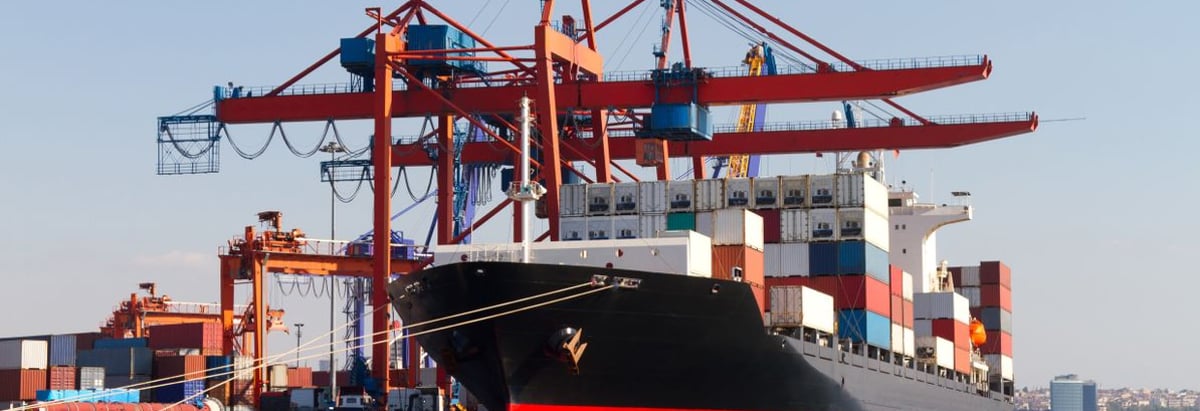Stock Analysis
- Denmark
- /
- Marine and Shipping
- /
- CPSE:MAERSK B
Is A.P. Møller - Mærsk (CPH:MAERSK B) Using Too Much Debt?

David Iben put it well when he said, 'Volatility is not a risk we care about. What we care about is avoiding the permanent loss of capital.' It's only natural to consider a company's balance sheet when you examine how risky it is, since debt is often involved when a business collapses. We can see that A.P. Møller - Mærsk A/S (CPH:MAERSK B) does use debt in its business. But is this debt a concern to shareholders?
Why Does Debt Bring Risk?
Debt and other liabilities become risky for a business when it cannot easily fulfill those obligations, either with free cash flow or by raising capital at an attractive price. In the worst case scenario, a company can go bankrupt if it cannot pay its creditors. While that is not too common, we often do see indebted companies permanently diluting shareholders because lenders force them to raise capital at a distressed price. Having said that, the most common situation is where a company manages its debt reasonably well - and to its own advantage. The first step when considering a company's debt levels is to consider its cash and debt together.
View our latest analysis for A.P. Møller - Mærsk
What Is A.P. Møller - Mærsk's Net Debt?
The image below, which you can click on for greater detail, shows that at June 2024 A.P. Møller - Mærsk had debt of US$5.40b, up from US$3.85b in one year. However, it does have US$19.8b in cash offsetting this, leading to net cash of US$14.4b.
How Healthy Is A.P. Møller - Mærsk's Balance Sheet?
We can see from the most recent balance sheet that A.P. Møller - Mærsk had liabilities of US$12.1b falling due within a year, and liabilities of US$15.5b due beyond that. Offsetting these obligations, it had cash of US$19.8b as well as receivables valued at US$7.85b due within 12 months. So these liquid assets roughly match the total liabilities.
This state of affairs indicates that A.P. Møller - Mærsk's balance sheet looks quite solid, as its total liabilities are just about equal to its liquid assets. So while it's hard to imagine that the US$22.5b company is struggling for cash, we still think it's worth monitoring its balance sheet. While it does have liabilities worth noting, A.P. Møller - Mærsk also has more cash than debt, so we're pretty confident it can manage its debt safely.
It is just as well that A.P. Møller - Mærsk's load is not too heavy, because its EBIT was down 96% over the last year. When a company sees its earnings tank, it can sometimes find its relationships with its lenders turn sour. There's no doubt that we learn most about debt from the balance sheet. But ultimately the future profitability of the business will decide if A.P. Møller - Mærsk can strengthen its balance sheet over time. So if you're focused on the future you can check out this free report showing analyst profit forecasts.
Finally, a business needs free cash flow to pay off debt; accounting profits just don't cut it. While A.P. Møller - Mærsk has net cash on its balance sheet, it's still worth taking a look at its ability to convert earnings before interest and tax (EBIT) to free cash flow, to help us understand how quickly it is building (or eroding) that cash balance. Over the last three years, A.P. Møller - Mærsk actually produced more free cash flow than EBIT. That sort of strong cash conversion gets us as excited as the crowd when the beat drops at a Daft Punk concert.
Summing Up
We could understand if investors are concerned about A.P. Møller - Mærsk's liabilities, but we can be reassured by the fact it has has net cash of US$14.4b. The cherry on top was that in converted 105% of that EBIT to free cash flow, bringing in US$592m. So we are not troubled with A.P. Møller - Mærsk's debt use. When analysing debt levels, the balance sheet is the obvious place to start. But ultimately, every company can contain risks that exist outside of the balance sheet. For example A.P. Møller - Mærsk has 3 warning signs (and 2 which are a bit unpleasant) we think you should know about.
At the end of the day, it's often better to focus on companies that are free from net debt. You can access our special list of such companies (all with a track record of profit growth). It's free.
New: Manage All Your Stock Portfolios in One Place
We've created the ultimate portfolio companion for stock investors, and it's free.
• Connect an unlimited number of Portfolios and see your total in one currency
• Be alerted to new Warning Signs or Risks via email or mobile
• Track the Fair Value of your stocks
Have feedback on this article? Concerned about the content? Get in touch with us directly. Alternatively, email editorial-team (at) simplywallst.com.
This article by Simply Wall St is general in nature. We provide commentary based on historical data and analyst forecasts only using an unbiased methodology and our articles are not intended to be financial advice. It does not constitute a recommendation to buy or sell any stock, and does not take account of your objectives, or your financial situation. We aim to bring you long-term focused analysis driven by fundamental data. Note that our analysis may not factor in the latest price-sensitive company announcements or qualitative material. Simply Wall St has no position in any stocks mentioned.
About CPSE:MAERSK B
A.P. Møller - Mærsk
Engages in the ocean transport and logistics business in Denmark and internationally.

